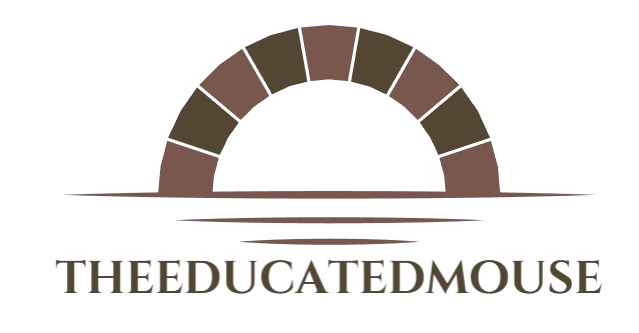Imagine a classroom buzzing with excitement as students eagerly leap into conversation in German, craft compelling essays in Spanish, and decode French songs with enthusiasm. Learning a language doesn’t need to feel like slogging through grammar drills and vocabulary lists. By weaving creativity, technology, and real-world relevance into your lessons, you can spark genuine curiosity and make your pupils fall in love with languages. Below are 25 interactive strategies—organized by skill area—that will transform your language classroom into a dynamic playground of expression and discovery.
Interactive Speaking Activities
Speaking is the heart of language acquisition, yet many learners shy away from oral practice. Infuse confidence and fun with these ideas:
- TikTok Duets
Present a short TikTok clip in your target language. Students record themselves responding—practicing pronunciation and spontaneous replies while mimicking the app’s viral style. - Mock Job Interviews
Give learners typical interview questions, have them prepare answers in pairs, then swap roles. They’ll learn formal registers and practice polite expressions in a realistic context. - Award Acceptance Speeches
Ask students to imagine they’ve won “Student of the Year” and deliver a thank-you speech. Encourage use of past tense, superlatives, and heartfelt expressions. - Founding a New Colony
In groups, students must choose seven pioneers to build a utopian society on a deserted island—debating and defending each candidate’s skills in the target language.
Interactive Listening Activities
Authentic audio materials train ears to real accents and intonation. Try these engaging formats:
- Urban Legends Podcast
Assign a short podcast about a famous folklore—like “El Chupacabras”—and have students sketch the creature as described, then answer detailed comprehension questions. - Direction-Following Roadmaps
Play an audio describing a route (“Turn left at the red building…”). Students draw or digitally trace the path on a map, verifying they caught every preposition and command. - Language History Video Quiz
Show a YouTube clip on the evolution of English (or any language), embedding quiz questions at intervals. Learners test both listening accuracy and cultural knowledge. - Everyday Dialogues
Use recordings of native speakers ordering coffee, chatting with a friend, or calling customer service. Paired with transcripts, students highlight key phrases and practice mimicking the dialogue.
Interactive Reading Activities
From menus to manga, real texts ignite interest. Engage readers with:
- Adapted News Stories
Simplify a current-affairs article to your students’ level. After skimming for gist, they debate the topic in small groups, then answer detailed questions to test comprehension. - Digital Bedtime Stories
Assign a different illustrated story each day, complete with audio narration. Students complete comprehension exercises before the next “chapter” unlocks, turning reading into a weekly adventure. - Recipe Reconstruction
Present a famous dish’s recipe—say, Italian tiramisu—in the target language. Learners read, then write or record themselves giving step-by-step instructions as though cooking in class. - Forms and Flyers
Use real-world documents—a hotel booking form, concert brochure, or public transport flyer. Students extract necessary information and role-play filling out the forms under time pressure.
Interactive Writing Activities
Writing helps cement grammar and vocabulary. Boost creativity with:
- Forum Threads
Create a mock Q&A forum on a cultural topic. Students post answers, reply to peers, and practice polite disagreement—all in writing. - WhatsApp Chats
Have learners write a short messaging exchange between two characters from a novel or film, practicing informal registers, emojis, and abbreviations. - Open-Ended Prompts with Rubrics
Assign a debatable topic (“Should uniforms be mandatory?”), provide a clear rubric, and let students draft, self-edit, and submit polished paragraphs. - Emoji Story Generator
Use a random emoji spinner to prompt story elements. Students craft a short narrative—adding humor and spontaneity to writing practice.
Interactive Vocabulary Activities
Hands-on practice makes new words stick:
- Photo Hotspots
Display a scene (a kitchen, park, or market) and place clickable “hotspots” on items. Clicking plays audio or shows text with the word in context. - Game-Based Revision
Combine hangman, bingo, and crossword puzzles into a mini “vocabulary carnival.” Teams rotate through stations, racing to complete each game. - Flashcard Apps
Have students create digital flashcards on their phones. With spaced-repetition algorithms, they review irregular verbs or gendered nouns anytime, anywhere. - Idiom Match-Up
Pair common sayings (“It’s raining cats and dogs”) with literal illustrations. Learners match idiom with meaning, then invent their own visual puns.
Interactive Grammar Activities
Turn grammar into play:
- Timeline Tenses
Ask students to place sample sentences along a visual timeline—color-coding past, present, and future forms for a clear grasp of verb shifts. - Preposition Puzzles
Provide a “love letter” text with missing prepositions. Learners fill in blanks, then swap letters and peer-edit each other’s choices. - Random Wheel Drills
Spin wheels labeled with pronouns, verbs, and objects. Students form sentences on the spot—a fun twist on repetition that keeps them alert. - Interactive Quizzes
Embed short quizzes into storylines. As students progress through a narrative, they must apply correct grammar to unlock the next plot twist.
Bonus: Short-Film Workshops
- Micro-cinema Critique
Screen a two-minute silent film or animated clip. Learners predict dialogue, then watch with subtitles, analyze characters’ emotions, and write or perform the missing lines.
By blending technology, collaboration, and authentic contexts, you’ll create a language classroom where boredom is banished and curiosity reigns. Each activity invites students to take ownership—speaking, listening, reading, and writing—not as chores, but as doorways to new worlds. With these 25 strategies, you’ll watch your learners not only master grammar and vocabulary but also discover the joy of genuine communication.





